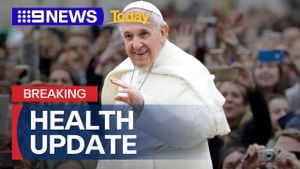Germany is gearing up for the Bundestag Election on February 23, 2025, and with it, the promise of new political dynamics motivated by significant electoral reforms. The upcoming election not only provides citizens with the opportunity to weigh their opinions on candidates and parties but also serves as the first implementation of changes to the electoral system aimed at refining how representatives are elected.
One of the central elements of the voting process is the distinction between the Erststimme (first vote) and the Zweitstimme (second vote). With the Erststimme, voters will select a candidate from their local constituency; Germany is currently segmentedinto 299 electoral districts, each with its own candidates vying for the chance to represent their community.
Each electoral district encompasses approximately 250,000 citizens. The candidate who secures the most votes within their district earns the Direktmandat or direct mandate. This means voters are not just choosing randomly; they are selecting individuals they believe will best represent their specific interests and concerns.
Contrarily, the Zweitstimme is where the broader party dynamics come to play. When citizens use their second vote, they are making their choice on the party they want to see gaining representation at the Bundestag level. This vote will determine the overall seat distribution among the parties based on their performance nationwide. The parties prepare for this by presenting Landeslisten, which is a ranking of candidates they propose for various states, set prior to the elections.
Recent reforms, driven by the coalition government, also brought forth substantial changes to the previous system: the maximum number of Bundestag members has now been capped at 630. Unlike before, individual victories for direct mandates do not guarantee election to the body—the seats need endorsement through accumulated Zweitstimmen as well.
According to the newly implemented regulations, should candidates receive more direct mandates than their party has seats according to the Zweitstimmen, they may lose the direct mandate with less overall votes but insufficient party support. This marks a notable transformation from the older system where victory assured entry, bringing more emphasis on collective party performance rather than individual electoral victories.
Voter awareness and comprehension of these differences are imperative, as the potential for confusion remains high. The reform aims to engage voters actively and limit the complications found during previous elections. It seeks to clarify what these two votes truly mean, ensuring voter confidence when making selections.
Regional forecasts indicate various candidates across the Hessian districts are positioning themselves for both direct mandates and party votes. For example, polls project different candidates leading the race for several districts, with parties and strategists managing their approaches, hoping to secure the necessary support.
Public opinion polling leading up to the election has been dynamic. Various platforms, such as election.de, have continuously reported modifications reflecting shifts based on these new electoral rules. While established parties still hold considerable advantages, the atmosphere remains fluid—especially concerning challenger parties.
What's at stake for citizens is not merely the choice of representatives but the essence of how democracy operates—where every voice and vote carries weight. Reflecting on the last election period, which saw 106 Überhangmandate or overhang mandates—an accountability measure made redundant under the new system—the importance of each vote and its outcome will be more pronounced than ever.
At the heart of it all remains the turnout rate, which can fundamentally shape the political contours of representation. The 2021 election saw around 76.6% of eligible voters casting their ballots. Engaging those who typically abstain from voting could yield surprising shifts within outcomes, altering the expected balance of power.
Final predictions suggest the election might witness the Union (CDU/CSU) leading the charge with expected wins across various constituencies, particularly within traditionally conservative zones. Conversely, the SPD faces forecasts of challenges, reflecting just how uncertain the political climate leading up to February 23 can be.
The newly restructured electoral framework promises to reshape not only how representatives enter the Bundestag but also the very conversations surrounding German politics, making it imperative for citizens to understand their choices and the processes at play.
Only through active participation will the electorate define the future—a collective mandate uniting voices. The upcoming Bundestag elections represent not just the act of voting, but the potential to reinforce, refresh, and revitalize democratic engagement across Germany.



